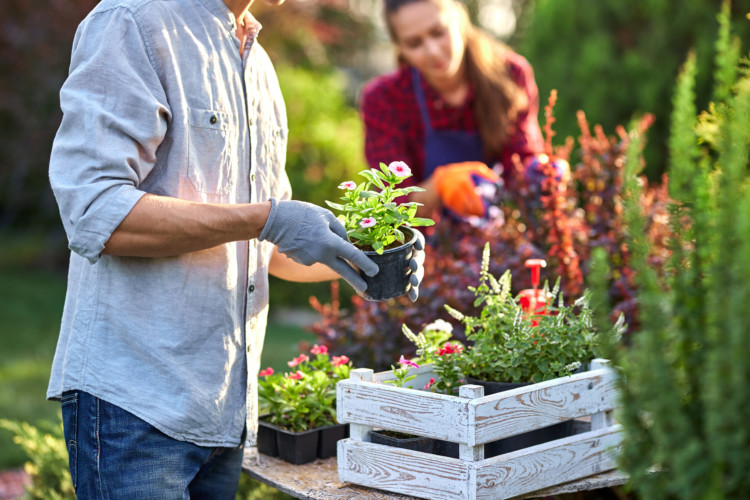
Spring is almost here and it’s time to think about your garden! You’ve been cooped up all winter, and now all you want is to surround yourself with bright colors: greens, reds, yellows, blues…it’s time to glow and grow!
Here’s a basic guide for what you should plan to do this spring in your yard:
SPRING INSPECTION
Check your garden for winter damage. While we’re in Florida, we don’t have to worry about snow damage, but there’s always other elements that can affect our yard. Have any boughs broken off in storms? Is the mulch in good shape? You want to replant shrubs that might have been pushed up. Try not to walk on muddy areas as footsteps compact the soil.
You want to look at the hardscaping items as well. What is hardscaping? This is anything in your landscape that is inanimate. Your retaining walls, pavers, outdoor kitchens, decks, driveways…things like that. Check all of these for rot or other forms of damage. This would be a great time to toss new mulch in the beds, give that fence a fresh coat of paint.
START THE SEEDS
Start the seeds of vegetables and annuals indoors 6-8 weeks before you plan to plant them. It’s a great idea to get a calendar and make a planting schedule so that seedlings mature at the right time for your area.
PRUNE SHRUBS AND VINES
This is the time. Remove dead branches and shape plants once new growth appears. Hold off on pruning spring bloomers until after they flower.
PREPARE ORNAMENTAL BEDS
Starting with areas where spring blooming bulbs are peeking out of the ground to enhance your color displays. Don’t forget to rake out surface debris and cut back on your perennials and ornamental grasses. It’s best to do this before the new growth appears. Pour on several inches of compost or manure which will add slow-release nutrients, suppress weeds, and conserve water.
DIVIDE PERENNIALS
When the new growth comes, it’s time to split. Transfer extra clumps into bare spots or give them away.
EDIBLE PLANTING
Remove surface debris such as leaves or mulch from vegetable beds. This helps warm the soil. You want to avoid compaction, so wait until the soil has dried out before tilling. If the soil crumbles when you try to make a ball it’s time to work the beds. Add compost, manure, and trace mineral sbefore planting early crops of lettuce, radishes, kale, peas, and onions. You might want to protect young plants from late frosts with a cloche or cold frame.
ADD COLOR
You want to place early season annuals around bulbs or in containers for extra color. This is when you’ll plant summer bulbs, so these will keep the bed colorful until they grow. Wait until all danger of frost has passed before you plant petunias and marigolds.
REJUVENATE WATER FEATURES
Make sure that fountain is clean, the filter is replaced. Turn on pumps and ensure the water is circulating. For natural water gardens like ponds, you can add beneficial plants or apply other algae control methods.
ENCOURAGE THE BIRDS
Birds and other wildlife are amazing at controlling pests. They balance the ecosystem and are just plan fun to watch. Add nesting boxes to attract different birds. Give consistent, clean water to encourage them. Plant natives that offer nectar, seeds, and berries and make sure they have trees and hedging for nesting and shelter.
